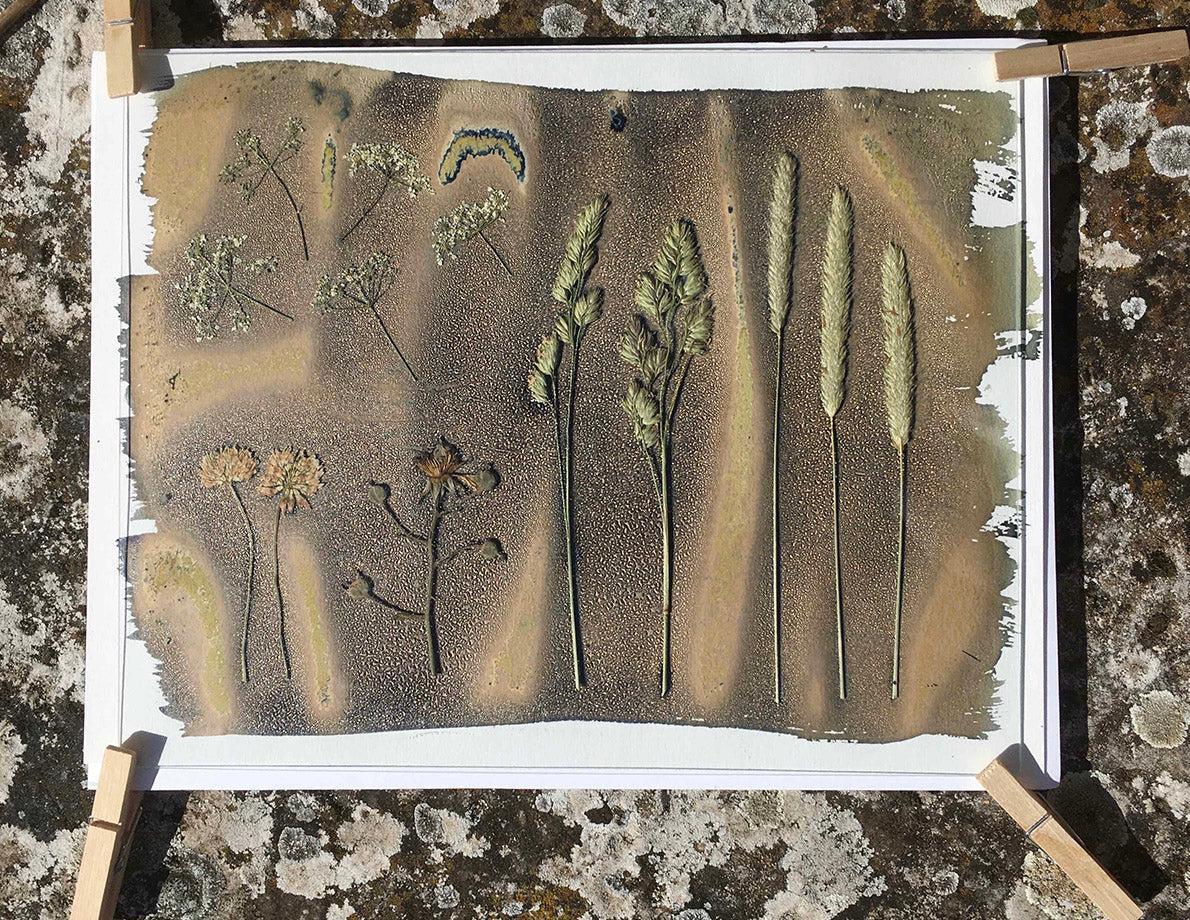Botanical Creation & Art
Create your own botanical cyanotypes
You admire Anna Atkins ' ctanotypes and you want to make some yourself.
Here is the method to make your own cyanotypes at home by following the steps in this practical guide.
What is a cyanotype?
Cyanotype is a photographic process invented in the 19th century. It allows the creation of unique prints without a camera, using sunlight.
A specimen – object, plant – is placed on a sheet of paper coated with a photosensitive solution and exposed to sunlight. The result after rinsing with water? A negative print.
The elements arranged on the sheet stand out in white against a deep blue background, known as Prussian blue.
Materials needed to create a cyanotype:
To get started, here is a list of the equipment you will need:
- thick paper , capable of withstanding rinsing with water
- a mixing kit for photosensitive solution (ferric ammonium citrate and potassium ferricyanide)
- a wide brush to apply the solution evenly to the paper and a glass jar, like a jam jar
- a glass or plexiglass panel to hold the plants in place during the exhibition
- clothespins and a rigid support to stabilize the different layers when exposed to the sun
and of course,
- Plants : flowers, leaves or any plant element that you wish to immortalize
Tip : you will find on the eshop a kit with all the necessary equipment , including the mixing kit for photosensitive solution, to create your cyanotypes (without the plants).
How to create a botanical cyanotype? Detailed steps:
1. Preparing the support
In the darkest room possible:
- Prepare the photosensitive solution: add water to each bottle (the one with the ferric ammonium citrate powder and the one with the potassium ferricyanide) to create a solution. Shake each bottle well to ensure the powders are dissolved. Pour the same proportion of each solution into the glass jar and mix them together.
- Dip the brush in the solution and apply it to your paper, ensuring an even distribution.
- Cover the paper to keep it in the dark and allow it to dry completely (for example, you can leave it to dry in a cardboard box).
2. Composition of your botanical image
- When the paper is dry, place it on a rigid support , such as a cardboard sheet.
- Arrange your plants carefully on the sheet
- Cover your composition with the glass or plexiglass panel.
- Hold the different layers together tightly (cardboard, paper, plants, glass panel) using clothespins.
3. Sun exposure
- Place your composition in direct sunlight for 5 to 20 minutes, depending on the light intensity. The stronger the light, the shorter the exposure should be.

4. Development of the cyanotype
- Once the exposure time is up, when the paper turns a grey-brown, lift the glass frame, remove the plants, and rinse the sheet under cold tap water (or immerse it in a container of water) to reveal the characteristic blue of the print. Then, let the sheet air dry.


Unleash your creativity and create unique works of art.


